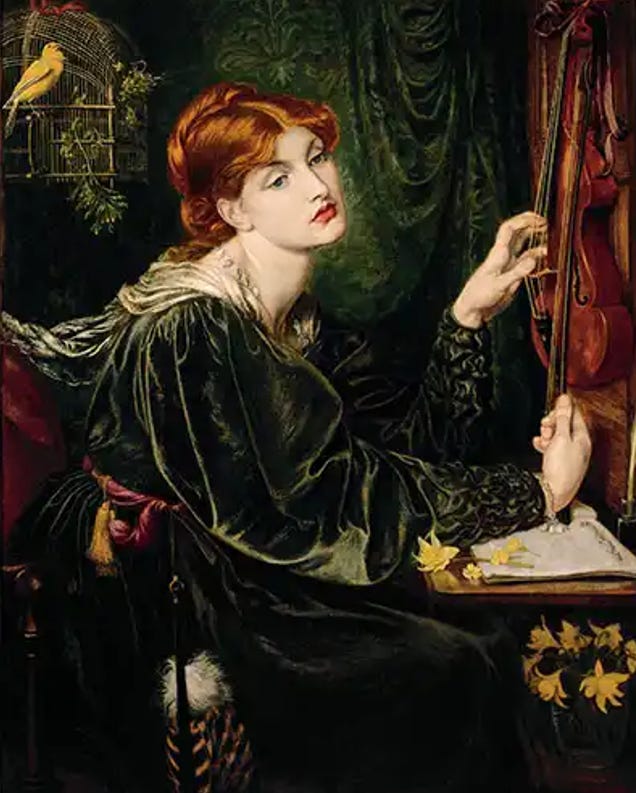The Neo-Gothic Revival: Re-enchanting Art and Craft in Victorian England
From Arts and Crafts and the Aesthetic movement, to the Pre-Raphaelites
As I’m working on today’s post for paid subscribers, I’m listening to an album I’ve loved for years of sacred songs by Abbess Hildegarde of Bingen. Titled “Feather on the Breath of God” these incredible ethereal, haunting songs of the love of God were recorded in 1982 by one of the great sopranos of our time, Dame Emma Kirkby.
I first discovered this record in the lending collection of the Lynne Valley public library in North Vancouver when I lived there. I borrowed it in consecutive loans for over a year, since it was by that time, the early ‘90s, already out of print (and neither Spotify nor even the internet yet existed). I had been familiar since childhood with Gregorian Chant from an LP my mother owned that I also played to death. My mother’s interest in Chant in the late ‘60s predated the white-hot trend it became in the ‘80s when the monks of the Spanish monastery Santo Domingo de Silos produced an album and launched an enduring trend.
But how did these relics of the ancient world, these shades of another order of civilisation that had been wiped out hundreds of years before, enter into the public consciousness in the mid-and late 20th century?
To answer this, we will go back to look at the artistic and spiritual revival of medieval art and aesthetics, music and architecture, sparked by the Neo-Gothic movement of the 19th century.
We talked last week about Augustus Pugin and his amazing one-man revival of medieval architecture. Today we will investigate those who followed him, tracing the movement’s path in England and Ireland and the continent, through the Pre-Raphaelites, the Arts and Crafts movement, and other restorations of tradition that brought the spurned medieval Catholic world - at least in aesthetics - forward into the modern world.
At the Sacred Images Project we talk about Christian life, thought, history and culture through the lens of the first 1200 years of sacred art. The publication is supported by subscriptions, so apart from plugging my shop, there is no advertising or pop-ups. It’s my full time job, but it’s still not bringing a full time income, so I can’t yet provide all the things I want to and am planning for.
You can subscribe for free to get one and a half posts a week.
For $9/month you also get the second half of the weekly Friday Goodie Bag post, plus a weekly paywalled in-depth article on our great sacred patrimony. There are also occasional extras like downloadable exclusive high resolution printable images, ebooks, mini-courses, videos and eventually podcasts.






